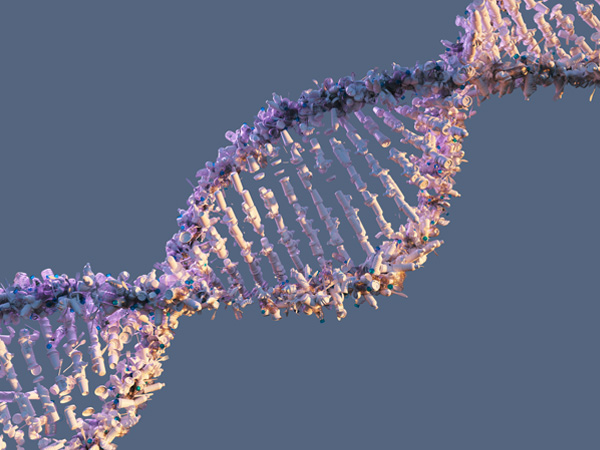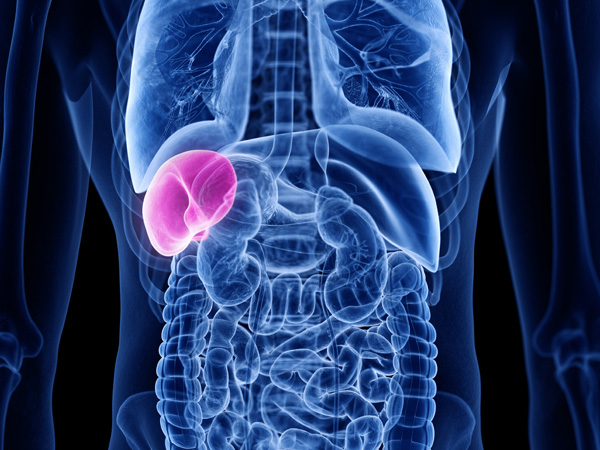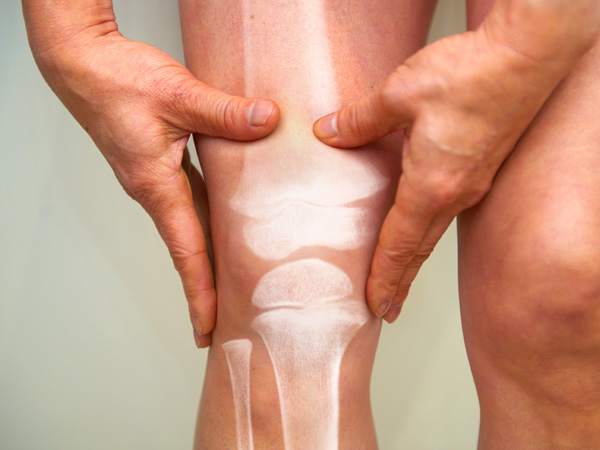- Home
- Science
- Diseases & Conditions
- Gaucher Disease
What Is Gaucher Disease?
Gaucher (pronounced go-SHAY) disease is a rare metabolic disorder in which lipids, or fats, build up in the body’s organs and tissues, including the liver, spleen, and bone marrow.1,2
Prevalence of Gaucher Disease
Gaucher disease is a genetic disorder that affects between 1 in 40,000 births to 1 in 100,000 births.1,3 As of 2018 approximately 6,000 people in the United States were diagnosed with Gaucher disease.2
It most commonly affects people of Ashkenazi Jewish descent.3
Causes and Risk Factors
What Causes Gaucher Disease?
Gaucher disease is an inherited lysosomal storage disorder, in which patients have low levels of the enzyme glucocerebrosidase (GCase). This enzyme is responsible for breaking down the fat glucocerebroside. Without enough of the GCase enzyme, fat can build up in specialized cells called macrophages that accumulate in the liver, spleen, and bone marrow, causing inflammation and organ dysfunction.1,4
Mutations in the GBA gene cause the condition. This gene mutation breaks down GCase activity.4

Gaucher Disease Genetics
Inheritance of Gaucher disease occurs in an autosomal recessive manner, meaning each parent passes on one mutated gene. Everyone has two copies of the GBA gene. People who have one copy of the gene that doesn’t work properly are considered carriers. People who develop Gaucher disease inherit a mutated copy of the gene from each of their parents, meaning they don’t have a single functioning copy of the gene.3,4
If both parents are carriers, their child has a 1 in 4 chance of being born with Gaucher disease, a 1 in 2 chance of becoming a carrier, and a 1 in 4 chance of neither having the disease nor being a carrier.3
Gaucher Disease Risk Factors
There are no lifestyle risk factors for the condition, but Gaucher disease more often affects people of Ashkenazi Jewish ancestry. About 1 in 14 Ashkenazi Jews is a carrier of the genetic mutation.3
There are three types of Gaucher disease:
This is the most common form of Gaucher disease. This type affects children and adults, but it is treatable.1 Some people with Type 1 may never have symptoms.1,3 Type 1 Gaucher disease primarily affects the liver, spleen and bones and typically does not affect the brain and spinal cord.1,3
This rare type of Gaucher disease often causes brain damage and is fatal. It typically begins in infancy.1,3
Type 3 is rare in the United States and Europe but is more common in other parts of the world. While it affects the neurological system, the systemic aspects of Type 3 Gaucher disease are treatable. It tends to progress more slowly than Type 2, so people with Type 3 often live into adulthood.1,3
Gaucher Disease Symptoms
In people with Gaucher disease, fats (lipids) build up throughout the body, which is what causes symptoms. Some people with the disease experience no effects, but others experience several problems. Signs of Gaucher disease can include2:
- Enlarged liver or spleen
- Low levels of red blood cells (anemia)
- Fatigue
- Low levels of platelets (thrombocytopenia), which can cause easy bruising
- Bone weakness (osteoporosis), fractures, and other skeletal issues
- Bone pain
- Neurological complications (Types 2 and 3).

Gaucher Disease Complications
People with Gaucher disease can experience problems with their heart or lungs. People with Type 1 Gaucher disease often start seeing symptoms in adolescence.2 Signs of Type 2 Gaucher disease typically appear in infancy, starting with spleen enlargement. Patients may develop other complications that affect their growth. Many people with Type 2 Gaucher disease do not live past age 2.2
People with Type 3 Gaucher disease develop it during their first decade of life. Neurological complications appear slowly, including mental deterioration, difficulty controlling voluntary movements, seizures, and lung disease. Most people with Type 3 Gaucher disease need help with daily living as they age and the disease worsens.2

Recent research suggests that people with Gaucher disease and Gaucher disease carriers are at higher risk of developing Parkinson's disease. People with Gaucher disease are also at higher risk of osteoporosis and certain cancers.2
Diagnosis and Treatment
Gaucher Disease Diagnosis
A doctor diagnoses Gaucher disease based on symptoms and blood tests. The most common blood test measures the activity level of the glucocerebrosidase enzyme. Clinical teams may also perform DNA tests to look for mutations in the GBA gene.3
Carrier testing or prenatal Gaucher disease screening may be performed as well, particularly for Ashkenazi Jewish people. Being a carrier does not mean someone will develop Gaucher disease. Even if both parents are carriers, that does not guarantee their child or children will inherit Gaucher disease. Understanding the implications of genetic testing can be difficult. It's best to speak with a genetic counselor before undergoing a test and then again after receiving the results.3,5
When possible, a Gaucher disease specialist can consult on treatment, as many primary care physicians have limited or no experience with this rare disease. A Gaucher disease specialist is someone who treats multiple patients with Gaucher disease or is actively involved in research related to the disease.6
Gaucher Disease: Ruling Out Similar Disorders
Other rare and inherited disorders can appear similar to Gaucher disease. Ruling out these conditions can help lead to a more accurate diagnosis2:
- Niemann-Pick disease
A group of disorders caused by an enzyme deficiency that leads to the buildup of the fatty substance sphingomyelin in the liver, spleen, and brain.
- Pompe disease
An inherited glycogen storage disease that causes a buildup of glycogen in the body.
- Hurler syndrome
A genetic disorder caused by a lack of a lysosomal enzyme, which breaks down complex carbohydrates. The condition can cause an enlarged liver and spleen, as well as skeletal abnormalities.
- Tay-Sachs disease
A deficiency in the enzyme hexosaminidase A causes certain types of fats to build up in the brain. This disease occurs in infants and can look similar to Type 2 Gaucher disease.
Commonly available treatments for Gaucher disease do not cure the condition. The goal of treatment is to reduce symptoms and improve quality of life for people with Types 1 and 3.2
This is most effective for Type 1 Gaucher disease. Although also shown to provide improvements in the systemic manifestations of patients with Type 3 Gaucher disease, ERT is not effective in helping with the neurological symptoms associated with these types. ERT replaces the glucocerebrosidase enzyme, which is responsible for breaking down glucocerebroside. This therapy is delivered roughly every two weeks through an intravenous infusion at a specialized center or at home.1,3,10
This is an oral medicine that blocks the production of glucocerebroside, reducing the amount of the fatty substance produced by the body. The goal is to prevent buildup throughout the body. SRT is only prescribed for specific adult patients with Type 1 Gaucher disease who may benefit or who cannot receive ERT.1,10
Some people may undergo surgery to remove the spleen, receive blood transfusions, or take medicine for pain.3 There are no effective treatments for neurological complications or brain damage caused by more severe forms of Gaucher disease.2,3
Global Impact of Gaucher Disease
An estimated 6,000 people in the United States have Gaucher disease.2 Type 1 is the most common type in the western countries like the United States, but Type 3 is more common in Asia1,7 and the Norrbotten region of Sweden.2,8 Gaucher disease affects all sexes and people of any ethnicity.2,10

Frequently Asked Questions About Gaucher Disease
- How do you test for Gaucher disease?
People with Gaucher disease have low levels of the glucocerebrosidase enzyme. Testing for Gaucher involves the measurement of the levels of this enzyme to inform a diagnosis. Genetic testing also looks for mutations to both copies of the GBA gene.2
- What chromosome is affected in Gaucher disease?
The GBA1 gene, which encodes glucocerebrosidase, is on chromosome 1q21.4,10
- How was Gaucher disease discovered?
Dr. Philippe Gaucher first characterized the disease in 1882 while treating a patient with an enlarged spleen. During an autopsy of the patient, Dr. Gaucher noticed the swollen cells (enlarged macrophages), which are now called Gaucher cells. Since then, doctors uncovered more symptoms of the disease. Type 2 was discovered in the 1920s, in babies with specific neurological symptoms. Type 3 was discovered in the late 1950s, in people with late-onset neurological symptoms.1,11
Explore Gaucher Disease clinical trials at ClinicalTrials.gov.
Area of Focus: Rare Disease
Gaucher Disease is a focus of Pfizer’s Rare Disease Therapeutic Area. Visit the Rare Disease Page.
- References
- What is Gaucher disease? National Gaucher Foundation. https://www.gaucherdisease.org/about-gaucher-disease/what-is/. Accessed February 16, 2022.
- Gaucher disease. National Organization for Rare Disorders. https://rarediseases.org/rare-diseases/gaucher-disease/. Accessed February 16, 2022.
- About Gaucher disease. National Human Genome Research Institute. https://www.genome.gov/Genetic-Disorders/Gaucher-Disease. Accessed February 16, 2022.
- Gaucher disease. MedlinePlus. https://medlineplus.gov/genetics/condition/gaucher-disease/. Accessed February 16, 2022.
- Prenatal screening and genetic counseling for Gaucher disease. National Gaucher Foundation. https://www.gaucherdisease.org/gaucher-diagnosis-treatment/testing/screening/. Accessed February 16, 2022.. Accessed February 16, 2022.
- Optimizing your health. National Gaucher Foundation. https://www.gaucherdisease.org/living-with-gaucher-disease/optimal-health/. Accessed February 16, 2022.
- Schwartz IVD, et al. Characteristics of 26 patients with type 3 Gaucher disease: A descriptive analysis from the Gaucher Outcome Survey. Mol Genet Metab Rep. 2017;14:73-79. doi:10.1016/j.ymgmr.2017.10.011. Accessed February 16, 2022.
- Martins AM, et al. Recommendations on diagnosis, treatment, and monitoring for Gaucher disease. J Pediatr. 2009;155(4):S10-S18. doi:10.1016/j.jpeds.2009.07.004. Accessed February 16, 2022.
- Gaucher disease. Cleveland Clinic. https://my.clevelandclinic.org/health/diseases/16234-gaucher-disease. Last updated September 14, 2020. Accessed February 16, 2022.
- Nagral A. Gaucher disease. J Clin Exp Hepatol. 2014; 4: 37-50. doi:10.1016/j.jceh.2014.02.005. Accessed February 16, 2022.
- The history of Gaucher disease. National Gaucher Foundation. https://www.gaucherdisease.org/blog/the-history-of-gaucher-disease/. Accessed February 16, 2022.
The information contained on this page is provided for your general information only. It is not intended as a substitute for seeking medical advice from a healthcare provider. Pfizer is not in the business of providing medical advice and does not engage in the practice of medicine. Pfizer under no circumstances recommends particular treatments for specific individuals and in all cases recommends consulting a physician or healthcare center before pursuing any course of treatment.
Related Articles
What You Need to Know About Gaucher Disease
Gaucher disease is a rare, inherited disease. It was first described by Dr. Philippe Gaucher in 1882 and is caused by genetic mutations (a permanent change in the DNA of a gene) received from both parents.

